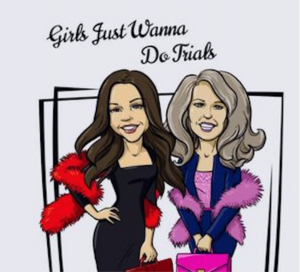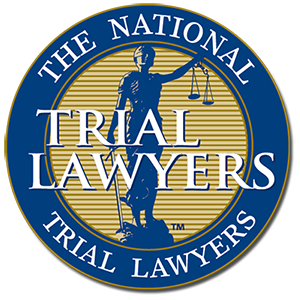Opening Statements: Get your FLO JO on! (An Excerpt from Ashley’s “Girls Just Wanna do Trials” Blog)
November 17, 2022
 I ran track in high school. Coach Mitchell consistently tried to convince me to become a “middle distance runner” which meant competing in the 880 and the mile run. I was WAY too lazy for that. In addition, I did not want to wake up at 5 am, before school, run five miles, and go to class with wet hair in 20-degree weather mixed in with the Oklahoma wind. Besides, I could hold my own in the 100 and 200, at least for a semi-short Caucasian. I was blessed with “strong” thighs (thanks, Mom) and quick feet. I was never going to get a Division One track scholarship, but playing sports always kept us kids out of trouble. Track is also the one sport where the boys’ and girls’ teams train and travel together, which was always a bonus.
I ran track in high school. Coach Mitchell consistently tried to convince me to become a “middle distance runner” which meant competing in the 880 and the mile run. I was WAY too lazy for that. In addition, I did not want to wake up at 5 am, before school, run five miles, and go to class with wet hair in 20-degree weather mixed in with the Oklahoma wind. Besides, I could hold my own in the 100 and 200, at least for a semi-short Caucasian. I was blessed with “strong” thighs (thanks, Mom) and quick feet. I was never going to get a Division One track scholarship, but playing sports always kept us kids out of trouble. Track is also the one sport where the boys’ and girls’ teams train and travel together, which was always a bonus.
Every sprinter knows that most races are won or lost right out of the blocks. Because ever millisecond counts, world class sprinters spend much of their training time trying to perfect their start technique and reaction time. Those with the best reaction time, greatest power, and ability to accelerate most rapidly, will excel more so than even the strongest athletes. An athlete with a great start may be able to win a race even if she is not the fastest athlete in the field.
Such is true for Opening Statements. Juries, some say, make up their minds within the first few minutes of the trial. Criminal defense attorneys like myself, of course, hope that a jury will listen to all of the evidence before they decide the fate of our clients. Jurors are human beings, however, after all. They have short attention spans, and they are used to constant stimuli from their respective smart phones. A good girl trial lawyer knows that she must draw them in out of the blocks or lose them forever! In keeping with the rule of 3’s, an Opening Statement must captivate, educate, and motivate.
Captivate
One of my favorite movie clips to show when I speak on trial techniques is a scene from the move Chicago, starring Richard Gere, who plays Roxy’s notorious criminal defense attorney, Billy Flynn, At the outset of the trial, during Roxy’s direct examination, Flynn sings and dances to the song, “Razzle Dazzle.” Girls dressed as flappers, trapeze artists and others swing around the stage as Flynn tap dances his way around the very damning facts in Roxy’s murder trial. Aside from element of deceit, the scene is quite captivating.
If singing and dancing is not your thing, there are plenty of other ways to get the jury’s attention. For example, start by tying the case to something to which most jurors can relate. Think about “feel good” concepts, such as “country” and “community.” In a bribery and public corruption case, we wanted to show the jury that our client was not the kind of person who would have accepted a bribe. We painted a picture of who he was, using specific examples, with our theme being “faith, family, and service.” Everyone can relate to those three things in one way or another. The jury heard that the defendant did not allow any of his sons to obtain a driver’s license until they became Eagle Scouts. The rank of Eagle Scout is the highest achievement or rank in the Boy Scout program. We subtlety tied our client to well-known heroes by mentioning that Neil Armstrong, Stephen Spielberg, and Gerald Ford were some of the more notorious Eagle Scouts. We told the jury that an Eagle Scout must earn at least 21 merit badges, before reaching Eagle status. An Eagle Scout. must plan, develop, and lead an extensive service project—the Eagle Project. We talked about how the defendant had coached soccer, and volunteered in the children’s schools, and at the church. We laid out the road map for all of the character witnesses that eventually testified, one by one, about the wonderful qualities of our client, which was all true!
Shocking the conscience is also sometimes appropriate, especially for Plaintiff’s lawyers and prosecutors. The goal it to convince the jury that they need to do “the right thing.” On December 29, 1946, during his Opening Statement of the Doctors’ Nuremburg trial, Brigadier General Telford Taylor began by saying:
The defendants in this case are charged with murders, tortures, and other atrocities committed in the name of medical science. …A nation which deliberately infects itself with poison will inevitably sicken and die. These defendants and others turned Germany into an infernal combination of a lunatic asylum and a charnel house. Neither science, nor industry, nor the arts could flourish in such a foul medium. The country could not live at peace and was fatally handicapped for war. I do not think the German people have as yet any conception of how deeply the criminal folly that was Nazism bit into every phase of German life, or of how utterly ravaging the consequences were. It will be our task to make these things clear.
Yep, you had me at “Hello.”
I am not here to tell you that it is easy to captivate a jury, or to captivate anyone in this day and age. You don’t have to do a tap dance, however, to reel them in. Just relate to them. Be your rockin’ self. Rafe Forman, who hosts the Trial Lawyers’ College Podcast, said once, “The only role you can play is yourself because all of the other roles are taken.” Talk to the jury like you would talk to your kids, or your co-workers, or your friends. BE REAL. Don’t talk at them, talk with them. Do not read your opening statement. Please, do not. If you learn one thing from this chapter, let it be that you should NEVER NEVER Read anything to the jury. Have a conversation. Look the jurors in the eye, one by one. Deliver your client’s story with emotion and conviction. As women, we have the wonderful gift of compassion-we can relate to most anyone! Relate your client’s story to real life problems, issues, and solutions.
Educate
Every sprint race has three phases: Acceleration, Transition, and Gliding. After a runner accelerates out of the blocks, the body transitions to an upright position, and “glides” through the finish line. If you have a minute, watch some old clips of Florence Griffith Joyner (“FloJo”) from the 1984 Olympics. FloJo was one of the fastest American women runners of all time. She would get into the block, digging her three-inch red, white and blue fingernails into the track in front of her. The gun would sound, and Poof! She would pop up out of those blocks like a “Jackie” in the Box. Her long black hair flowed behind her, as she left most of the field in the dust.
Once you captivate the audience with your own “FloJo”, you must transition into the educational phase of your opening statement. Tell the jury what they are going to see. Tell them what they are going to hear. Give them a road map of the things to come. Weave your theme in and out of the Cast of Characters and demonstrate how the witnesses will tell your client’s story. Think of yourself as Jacob Marley in the Christmas Carol. “The Ghost of Christmas Past, Present and the Future, are going to scare the hell out of you tonight!” Let the jury to see how witnesses to come are going to knock it out of the park when it comes to your side of the case.
Motivate
Finally, by the end of the Opening Statement, you should already have motivated the jury in to doing exactly what you want them to do. Don’t say, “Ladies and Gentlemen, we will ask you at the end of this trial to return a verdict in favor of (my client.) Everyone uses that line, and it does nothing. Tell them REALLY what you want them to do.
Tell them their verdict must be based on facts, not a story. Tell them their verdict must be based on evidence, not speculation. Ask them to use common sense. Talk about human fallacies, and how sometimes even good people get it wrong. “Sally may have thought she saw Jack there that night, but you will hear that Jack was at home. Betty will be here to testify. She will tell you that she was with Jack, at home, all night. Even the most honorable person can make a mistake. We believe that you will find at the end of the trial that Sally mistakenly identified Jack.”
Set the stage regarding the true conflict in the case: “This case comes down to whether you believe Sally, or Trey. If you believe Trey, you must find in favor of the Plaintiffs.” Be specific about the core issues of your case, and where the jury needs to go to get to the result you are seeking. While there may be various issues in the case, pick out the most important one, and tell the jury why they will have no choice but to find in favor of your client.
Whatever you do, do not oversell and under deliver. If you are not sure if your client is going to testify, then for heaven’s sake, don’t tell the jury he is. Don’t make promises you can’t keep.
Find your lightening.
In the sprinting world, Usain Bolt remains the undisputed dominant force in recent times. “Lightning” Bolt currently holds the world records for men’s 100m, 200m sprints and was part of the 4x100m world record-holding Jamaican quartet that included Nesta Carter, Michael Frater and Yohan Blake. Some attribute his untouchable starts to his posture. Bolt keeps his ankles, knee, hips, and shoulders in a straight line. Many other runners lean forward to generate force, which takes much more effort. Others attribute Bolt’s success to limited path deviation, and his tall stature. Most people do not know that Bolt suffered from scoliosis, a condition that curved his spine to the right, causing his right leg to be ½ inch shorter that his left leg.
No matter what Usain’s secret may be, the point is to find your own lightning-find what works for you. Other than just being you, the best way to prepare an opening statement is to know your case and your client, inside and out. The rest will come easily. Girls, you’ve got this!








